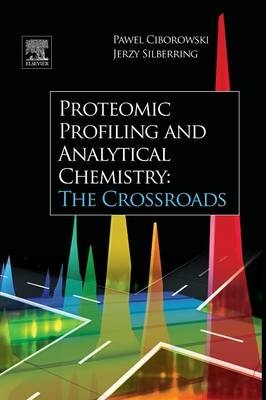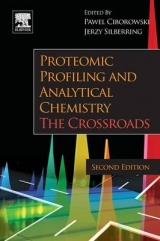
Proteomic Profiling and Analytical Chemistry
Elsevier Science Ltd (Verlag)
978-0-444-59378-8 (ISBN)
- Titel erscheint in neuer Auflage
- Artikel merken
Proteomic Profiling and Analytical Chemistry helps scientists without a strong background in analytical chemistry to understand basic analytical principles and apply them to proteomics profiling. In most proteomic profiling experiments, liquid chromatography is used; this method is also used widely in analytical chemistry. This book bridges the gap between overly specialized courses and books in mass spectrometry, proteomics and analytical chemistry. It also helps researchers with an analytical chemistry background to break into the proteomics field.
Proteomic Profiling and Analytical Chemistry focuses on practical applications for proteomic research helping readers to design better experiments and to more easily interpret, analyze and validate the resulting data. Experimental aspects such as sample preparation, protein extraction and precipitation, gel electrophoresis, microarrays, dynamics of fluorescent dyes, and more are all covered in detail.
Dr. Pawel Ciborowski obtained an MS in Biochemistry from Warsaw University and a PhD in Bacteriology/Biochemistry in 1983 from the National Institute of Hygiene in Warsaw. After spending two years as the Alexander von Humboldt Fellow at the University of Cologne and two years as Visiting Scientist at the University of Lund, he came to the University of Pittsburgh. Since 2003, he has been a faculty member at the University of Nebraska Medical Center where he conducts his own research and directs the Mass Spectrometry and Proteomics Core Facility and teaches courses in biochemistry, mass spectrometry, and proteomics. He is the author of over 70 papers and reviews, as well as several contributions to books and textbooks. His research is focused on the correlation of structure and function of proteins, their receptors and the impact of posttranslational modifications on their functions in understanding molecular mechanisms of pathological processes and applications of this information in designing new strategies for disease prevention, early diagnosis, and control. Using state-of-the-art techniques in proteomics, he is investigating the structure and function of proteins which are involved in (i) response to changes in cell's environment, (ii) response to stimuli such as tissue injury, infection, drug treatment, and (iii) during malignant transformation. Dr. Jerzy Silberring obtained a PhD in Chemistry in 1978 at Jagiellonian University, Kraków, Poland. He received a Docent of Biochemistry title at the University of Uppsala in 1991, and became a full professor of biochemistry at the Jagiellonian University in 2001. He spent 10 years at the Uppsala University and Karolinska Institute in Stockholm. He is the author of over 200 papers and reviews mainly on proteolytic enzymes, neuropeptides, neurobiology of pain and drug dependence, proteomics, and mass spectrometry. His investigations have contributed to our understanding of the regulation of neuropeptides and their fragments, discovery of novel peptides, and applications of mass spectrometry. He teaches biochemistry, neurobiology of behavior, and drug dependence at the AGH University of Science and Technology, Jagiellonian University, and the Centre of Polymer and Carbon Materials, Polish Academy of Sciences.
Chapter 1: Introduction Chapter 2: Biomolecules Chapter 3: Fundamental Strategies of Protein and Peptide Sample Preparation Chapter 4: Protein Extraction and Precipitation Chapter 5: Immunoaffinity Depletion of High-Abundant Proteins for Proteomic Sample Chapter 6: Gel Electrophoresis Chapter 7: Quantitative Measurements in Proteomics Chapter 8: Proteomic Database Search and Analytical Quantification Chapter 9: Microarrays and Dynamics of Fluorescent Dyes Chapter 10: Design and Statistical Analysis of Mass-Spectrometry Based Quantitative Proteomics Data Chapter 11: Principles of Analytical Validation Chapter 12: Validation in Proteomics and Regulatory Affairs
| Erscheint lt. Verlag | 18.1.2013 |
|---|---|
| Verlagsort | Oxford |
| Sprache | englisch |
| Maße | 191 x 235 mm |
| Gewicht | 550 g |
| Themenwelt | Naturwissenschaften ► Biologie ► Biochemie |
| Naturwissenschaften ► Chemie ► Analytische Chemie | |
| ISBN-10 | 0-444-59378-0 / 0444593780 |
| ISBN-13 | 978-0-444-59378-8 / 9780444593788 |
| Zustand | Neuware |
| Haben Sie eine Frage zum Produkt? |
aus dem Bereich



